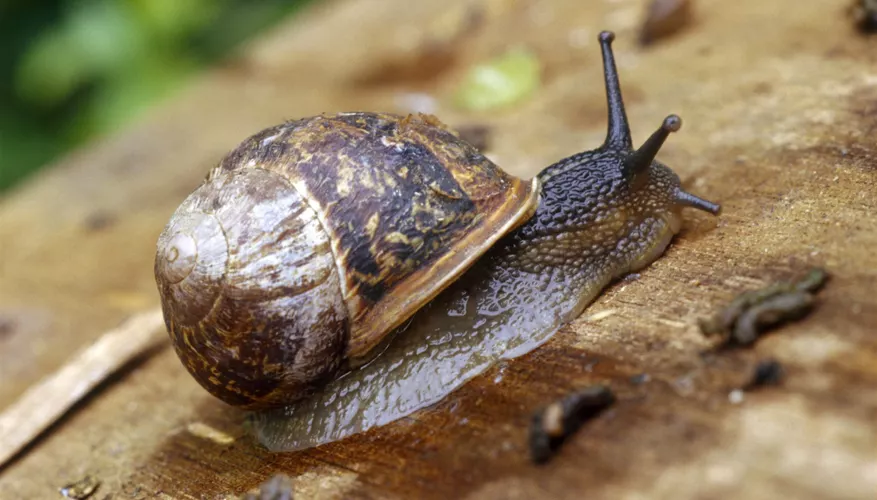The slime trail left by the brown garden snail (Cornu aspersum) often leads to the destruction of your freshly sprouted garden vegetables. Although initially imported from France for culinary purposes, this common snail species is one of over 25,000 species worldwide. These snails have spread to gardens across the country, often arriving through produce, aquatic plants, or even deliberately introduced for other purposes. Luckily, a variety of snail predators can help you control this invasion.

While humans often enjoy snails cooked with garlic and butter, certain mammals are also fond of snails. Some common mammalian snail predators include:
| Mammal | Description |
|---|---|
| Northern Short-Tailed Shrew | This aggressive carnivore consumes up to three times its body weight in food daily. |
| American Shrew Mole | Often preys on snails along with other small invertebrates. |
| Coast Mole | Also known for hunting snails in gardens and other habitats. |
| Western European Hedgehog | Hunts snails and other small creatures to supplement its diet. |
Shrews are particularly voracious and will actively hunt and consume snails in large quantities. The northern short-tailed shrew even stores snails and other food items to survive winter months, including seeds, beetles, and nuts.
Both wild and domestic birds are well-known for their snail-eating habits. For example:
| Bird | Snail Consumption |
|---|---|
| Chickens | Actively forage for snails, reducing snail populations in gardens. |
| Ducks | Regularly consume snails and other garden pests. |
| Geese | Similarly reduce snail numbers by feeding on them. |
| Everglades Kite | Feeds on Florida applesnails in wetland areas. |
| Wood Stork | Eats various snail species in its migratory and breeding grounds. |
| Whooping Crane | Also consumes snails during migration and nesting. |
Allowing chickens, ducks, and geese to roam your garden can significantly decrease snail populations, helping to keep your garden free from these pests. Additionally, waterbirds such as the wood stork and whooping crane rely on snails as a primary food source in specific habitats.
Reptiles are also efficient snail predators, and attracting them to your garden can help with pest control. Consider the following:
| Reptile | Snail Consumption |
|---|---|
| Toads | Known to eat snails, especially when a broken clay pot is used to attract them. |
| Spotted Salamanders | Actively hunt snails in gardens and moist environments. |
| Common Box Turtle | A frequent consumer of snails and other small garden pests. |
| Garter Snakes | Hunt snails and small invertebrates in various habitats. |
To attract toads and spotted salamanders, simply place a broken clay pot upside down and keep it moist, which will encourage these reptiles to make your garden their home. For box turtles and garter snakes, snails can be a tasty supplement to their diet, but be cautious about pesticides in your garden, as they can be harmful to reptiles.
Interestingly, snails themselves are also snail predators. Some snails actively hunt and consume other snails, helping control populations. Notable predatory snails include:
| Predatory Snail | Use in Snail Control |
|---|---|
| Decollate Snail | Used in southern California to control brown garden snail populations. |
| Rosy Wolfsnail | Introduced to Hawaii to control the giant African snail. |
Additionally, certain beetles also hunt and eat snails:
| Beetle | Snail Predation |
|---|---|
| Devil’s Coach Horse | A voracious predator of snails. |
| Boat-Backed Ground Beetles | Actively hunts and feeds on snails. |
Both the decollate snail and the rosy wolfsnail have been used in specific regions as biological control agents to reduce problematic snail populations. Beetles, such as the devil’s coach horse, will consume snails and leave their empty shells behind, helping to naturally reduce snail numbers.
From mammals to birds, reptiles, and even other snails, many creatures serve as effective predators of snails. Whether you're dealing with a garden snail invasion or trying to control pest snails in agricultural settings, these natural predators can significantly reduce snail populations without the need for harmful chemicals. By encouraging these snail-eating animals to thrive in your environment, you can create a more sustainable and healthy ecosystem for your garden or landscape.
animal tags: snails
We created this article in conjunction with AI technology, then made sure it was fact-checked and edited by a Animals Top editor.